Dehydrating Oranges & Orange Fruit Leather
Orange you glad this page covers dehydrating oranges?
Dehydrating sliced oranges with the rind on is the usual way to dry oranges, but that’s just the beginning. Explore how to dehydrate oranges slices, sections, blended into orange fruit leather, powdered, candied, and dipped in chocolate.
With all methods of dehydrating oranges, you’ll have an easier time if you dry seedless oranges. Thoroughly wash the oranges. Buy organic oranges to avoid any pesticides on the peels.
How to Dehydrate Oranges Table of Contents
Dehydrating Oranges in a Cosori Dehydrator
How to Make Orange Fruit Leather
Dehydrating Sliced Oranges
If dehydrating oranges in slices, cut them as thinly as possible, and place the slices on top of nonstick sheets in the dehydrator. The thinner you slice them, the faster they will dry. If desired, you can cut away the peels. One Excalibur Dehydrator tray will accommodate four to five sliced oranges.
Set the temperature at 135°F (57°C).
Drying times vary depending on dehydrator model, thickness of slices,
and other conditions. The thinly sliced dehydrated oranges shown in the photo
below were dry after 14 hours, but thicker sliced oranges may take 20 hours or a little more.
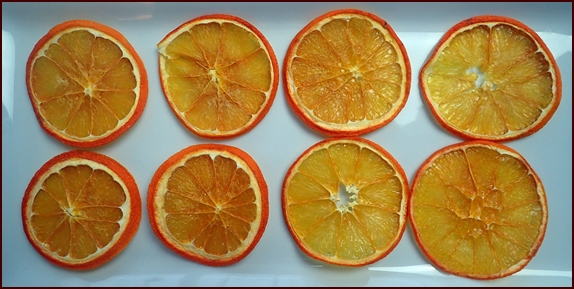
When are Oranges Dry?
Fully dried orange slices will break in half when you bend them. If they are still mostly pliable, they need more time in the dehydrator. The peels will be crunchy.
Chances are, not all of the slices will be dry at the same time due to varying thicknesses of the slices. Press down on orange slices when they look dry. If you feel any softness indicating moisture, place those slices back in the dehydrator until crispy.

Photo: Oranges dried in half-slices directly on a nonstick mesh dehydrator sheet.
Dehydrated orange slices are excellent for adding flavor to a thermos of tea, and some folks add them to wine or Sangria.
Around the holidays, try dipping half of each dehydrated orange slice in chocolate.
Explore How to Make Chocolate Covered Oranges.
Dehydrating Oranges in a Cosori Dehydrator
How many oranges can you dehydrate in a 6-Tray Cosori dehydrator?

If you cut them into half-slices, you can fit about 17 large oranges on 6 trays. Pick up a 2-kilogram bag, about 4 pounds, to dry a full load.
Cutting the oranges into half-slices reduces the drying time, especially when you dehydrate oranges on silicone mesh sheets.
As an Amazon Associate, Backpacking Chef earns from qualifying purchases. Thank you!
Dehydrating Oranges in Pieces
The photos below show two more ways to cut oranges for dehydration: the “grapefruit cut” and the “peel and cross section cut.”
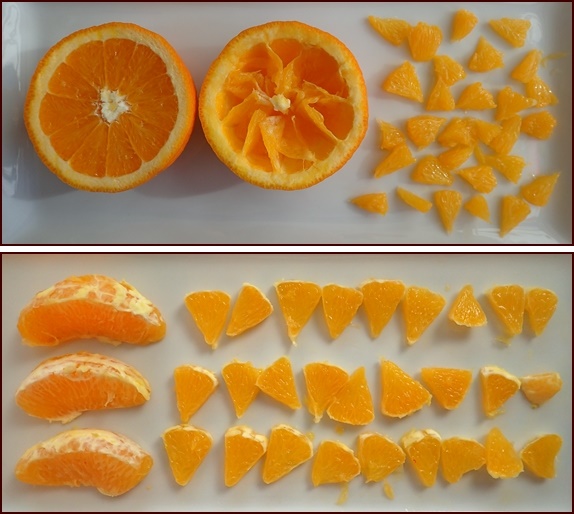
The Grapefruit Cut
Cut oranges in half. Using a small serrated knife, cut along the edge of each wall inside the orange and along the peel. Pop out the triangular-shaped sections with the knife. Cut larger pieces again for faster drying.
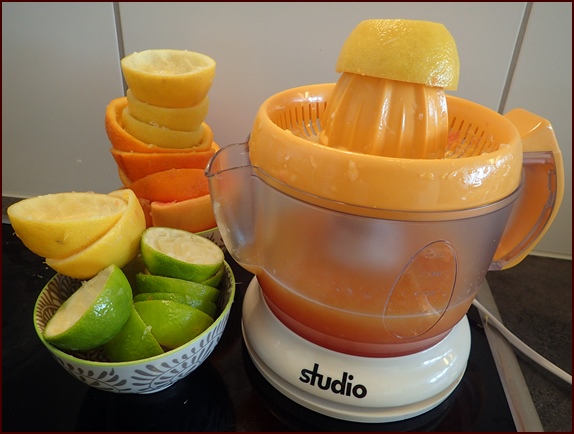
Photo: When using the grapefruit cut, capture any juice remaining in the fruit with a juicer. Enjoy the juice as a treat while you work, or use the juice and the peels to make candied citrus peels, discussed further down the page.
The Peel & Cross Section Cut
Peel oranges and pull apart the interior into crescent moon-shaped sections. Cut each section crosswise about nine times.
With both cutting methods, place orange pieces on nonstick sheets and dehydrate at 135°F (57°C) for fourteen hours, or longer if necessary. Dehydrating oranges directly on mesh sheets will shorten the drying time, but the dried orange pieces will stick to the mesh and be hard to remove. This is even more of a problem for the other citrus fruits—lemons, limes, and grapefuits. Using a nonstick sheet makes removal from trays quick and easy.
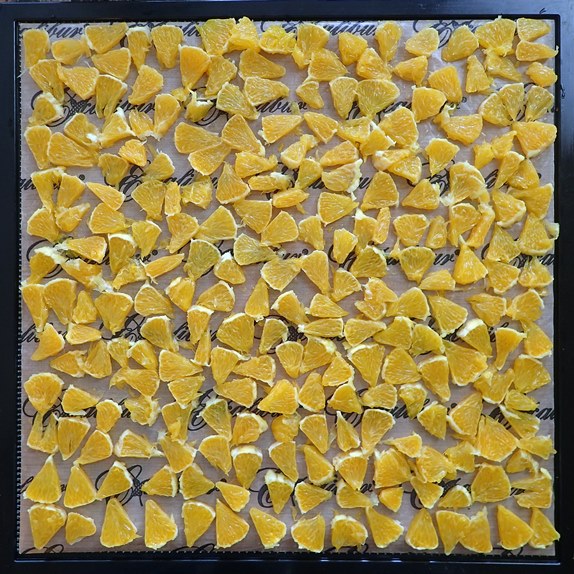
Dehydrated orange pieces will be slightly pliable, but will also be easy to snap in half. Once dried, try coating them in melted chocolate as shown below.
Explore How to Make Chocolate Covered Oranges.
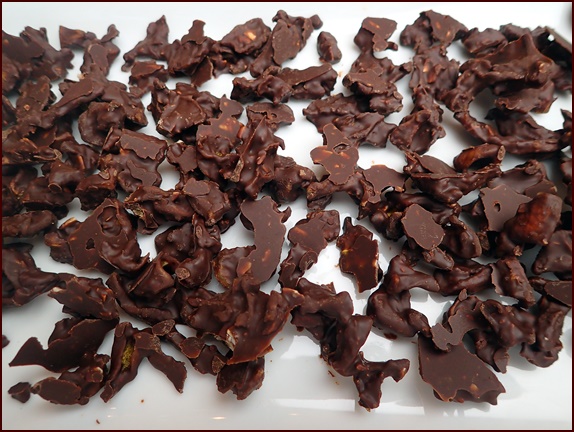
Store dehydrated oranges in airtight containers.
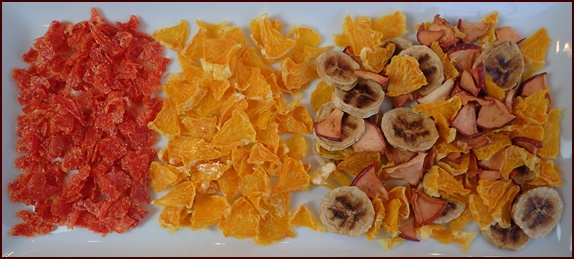
Photo above: Dehydrated grapefruit and orange pieces make great trail snacks by themselves or in combination with other dried fruits like bananas and apples.
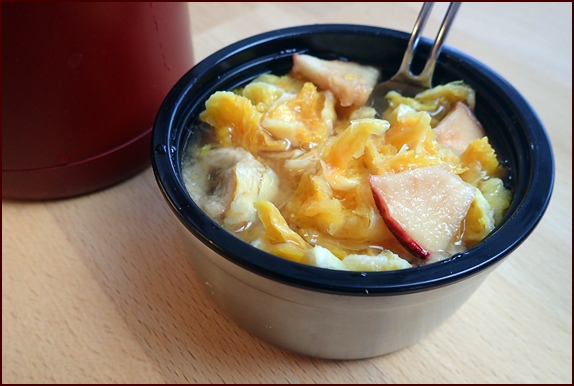
Photo: Dehydrated oranges, bananas, and cranberry-infused apples
rehydrated in a thermos food jar. Makes a refreshing afternoon fruit
cocktail.
Rehydrating Fruit Cocktail: Add ½ cup of cold water to ½ cup of dried fruit. If you double the water, the extra water will take on a fruity taste, which is delightful and will help keep your hydrated on the trail. For best results, soak the fruit for at least an hour while you’re hiking.
How to Dehydrate Orange Fruit Leather
Orange fruit leather is delicious and easy to make. When sufficiently dried, the leather can be ground into powder for making orange juice on the trail.
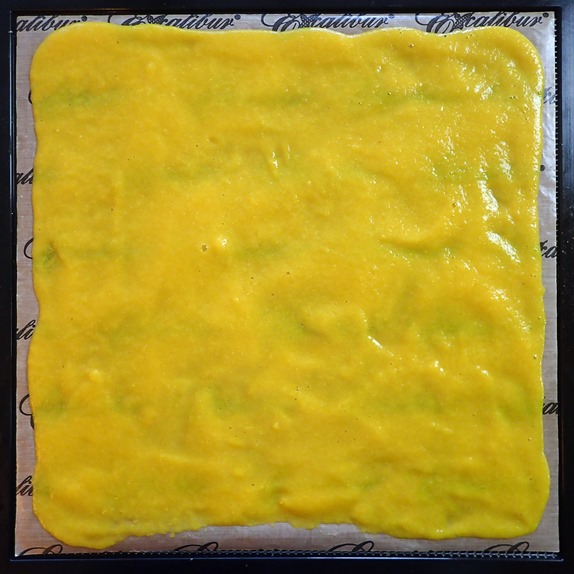
Peel oranges and cut them into smaller pieces. Run the pieces through a blender to a smoothie-like consistency. The photo above shows 1½ cups of blended oranges spread thinly on an Excalibur Dehydrator tray. Two cups of tightly packed orange pieces (400 grams) were used to yield the 1½ cups of blended orange.
Dehydrate at 135°F (57°C) for approximately five hours, or until no wet spots remain. When the orange leather is almost dry, flip it over and peel away the nonstick sheet. Finish drying directly on the mesh dehydrator sheet.
Dehydrated orange leather will be pliable, slightly stiff, and dry enough to fold and tear into sheets or smaller pieces. Store in an airtight container. If left out in the open, it will reabsorb moisture from the air and get sticky.
Variations: Combine oranges with bananas or mangos to create unique flavors. For ideas, explore Fruit Leather Recipes.
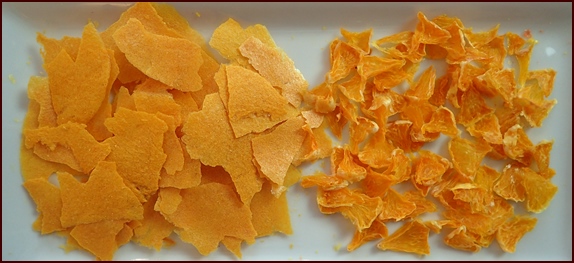
Photo: Dried orange leather torn into smaller pieces on left, and dried orange pieces on right. Both make great trail snacks.
Dehydrating Orange Juice Powder
If you dry the orange leather a little past the pliable stage to the snappy stage, you can powder it in a blender or grinder.
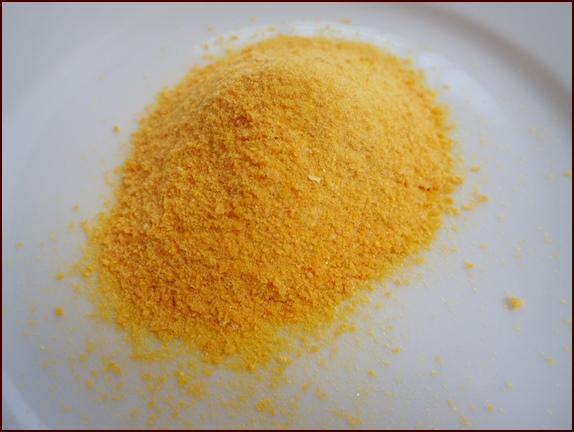
Yield: Two cups of tightly packed orange pieces (400 grams), blended and dried into orange leather on one Excalibur Dehydrator tray, will yield about five tablespoons of orange powder (50-60 grams).
Reconstituting Orange Juice Powder (One Serving):
Combine 2½ tablespoons (25 g) of orange powder with 8 ounces (237 ml) cold water. Shake container several times and allow a few minutes for the powder to break down. You can sweeten the juice with ¼-½ teaspoon of sugar per serving if desired.
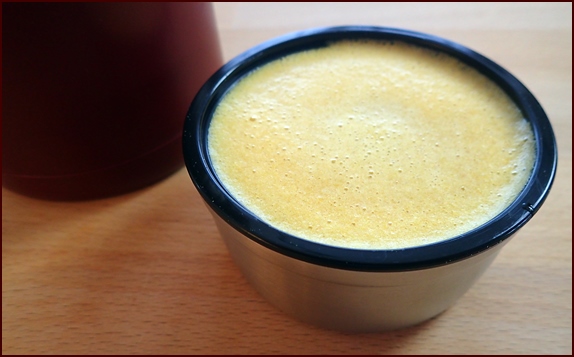
Photo: Orange juice made from orange powder served in the lid of a thermos food jar. The juice has a little froth on top from having been shaken in the thermos.
Remember Pixy Stix?
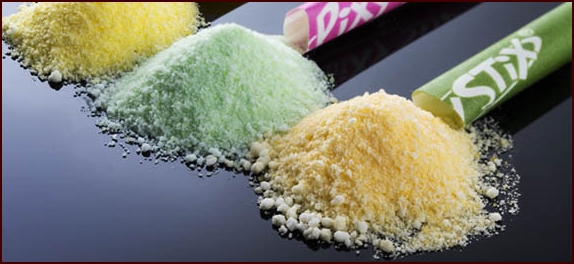
Make your own healthier variety of pixy stix with dehydrated orange powder and sugar. Add as much or as little sugar to the orange powder to suit your tastes.
How to Dehydrate Orange Peels
If you are dehydrating oranges in pieces, don’t discard the peels. Turn them into crunchy candy. Reserve one tray for dehydrating the citrus peels at the same time as the pieces.
The following candy-making method works with any kind of citrus peels, including lemons, limes, and grapefruit. Photo of lemon below shows how to cut and trim off the white part from the peels.
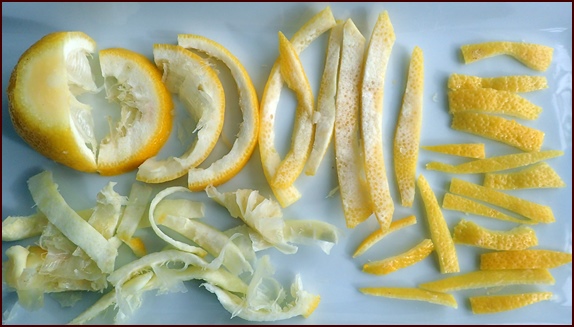
Start by slicing the peels into strips and trimming away as much of the
white pithy part as possible with a sharp knife. This takes a little
time, but you can do it after you load the dehydrator with the orange
pieces.
Place the trimmed peels directly on a mesh sheet and dry at the same time as the orange pieces at 135°F (57°C).
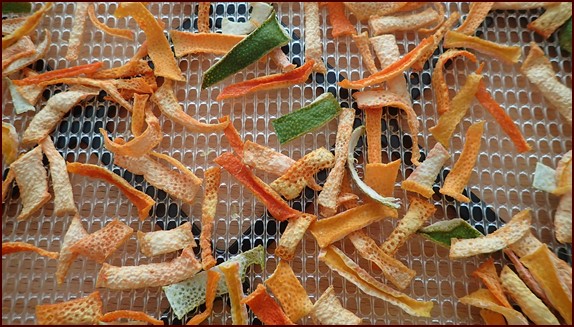
Photo: Dehydrated orange, lemon, lime, and grapefruit peels after four hours.
Remove citrus peels when they become brittle, after about four hours.
Place dried citrus peels in a container and cover with juice squeezed from the fruit-cutting operation. If you accidentally drank it all, use some orange juice from the fridge.
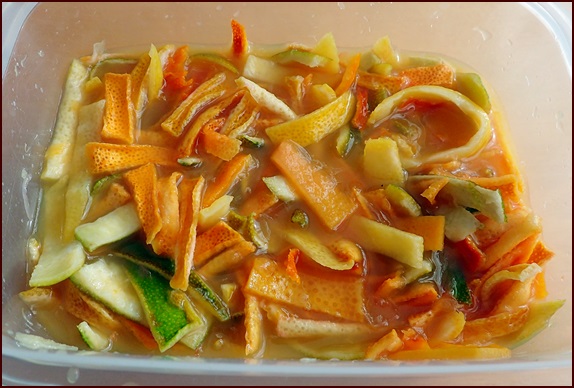
After about thirty minutes, pour off any juice that hasn’t been absorbed by the peels.
Place the moist citrus peels back on the dehydrator tray, this time with a nonstick sheet.
Stir in a generous amount of fine sugar to suit your taste. Don’t be stingy… think tablespoons, not teaspoons. Taste as you go until it makes your tongue happy.
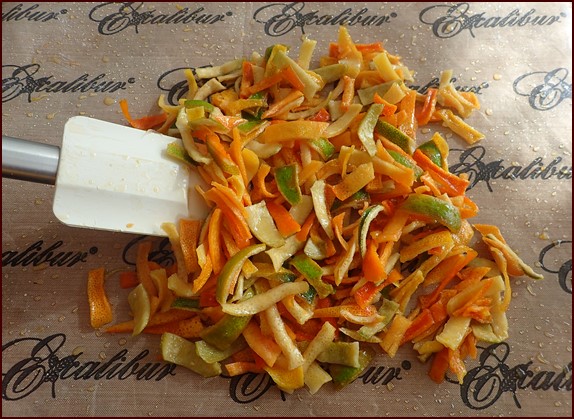
Once the peels are sweetened to your satisfaction, spread them out on the tray and put them back in the dehydrator. They will be crunchy again in about four hours, and surprisingly not sticky.
Store in an airtight container.
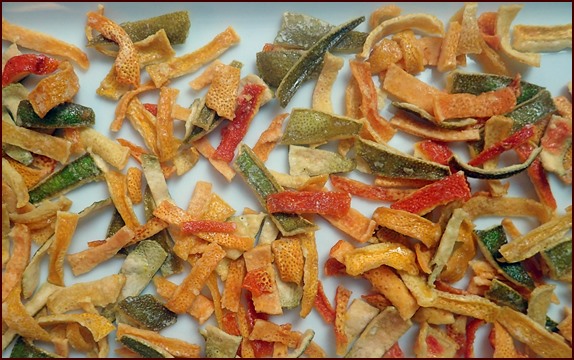
Photo: Assorted candied citrus peels made while dehydrating oranges, grapefruits, lemons, and limes.
Dehydrate lemons and limes at a lower temperature than oranges and grapefruit.
Dehydrating oranges and grapefruits at 135°F (57°C) is efficient and works well. However, lemons and limes will turn brown at that temperature. Turn the temperature down to 115°F (46°C) for lemons and limes. They may still turn a little darker, but not nearly as bad as at the higher temperature.
In order to shorten the drying time that results from drying at the lower temperature, slice lemons and limes in half longwise, and then crosswise into very thin slices. Arrange lemon and lime half-slices on dehydrator trays with cut side facing into the fan.
Explore More: Dehydrating Lemons & Limes.
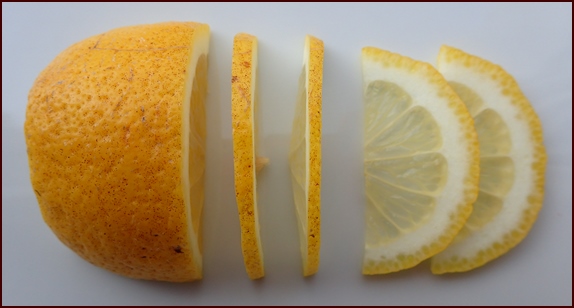
Photo: Drying thinly sliced lemons works better than drying sections removed using the "grapefruit" cut. Once dried, the rinds are crunchy and fun to eat as a snack.
Dehydrating oranges takes longer, preparation-wise, than drying apples, bananas, and strawberries, but you'll enjoy the sweet taste and nutritional benefits added to your backpacking diet, such as vitamins C, A, and B-complex, pectin, flavonoids, antioxidants, and minerals. Source: Orange Nutrition Facts
Share this page with friends on social media.
Free E-book & Newsletter
Free with Trail Bytes subscription.
Dehydrating Food from A–Z











